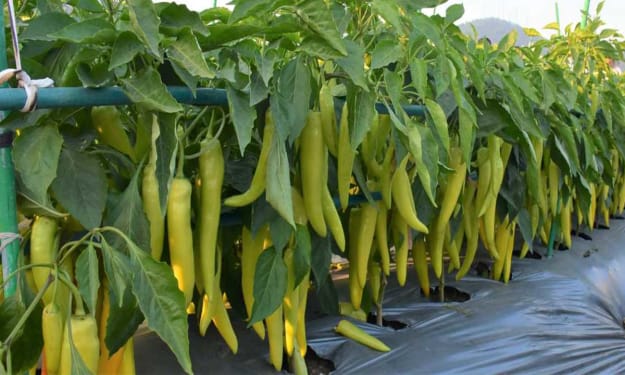Can Lilacs Grow in Texas?
growing lilacs in texas

I. Introduction
The ideal conditions for lilacs usually entail a cold winter, a mild summer, which Texas isn't exactly known for. Do lilacs grow in Texas? With the right care and conditions, you can coax these fragrant beauties into bloom in your garden.
II. Popular lilac varieties
Lilacs (part of the Syringa genus) are woody shrubs. They are celebrated for their cluster of small, delicate blossoms. The genus contains around 20 to 25 species, each with its unique characteristics. The most commonly cultivated are the common lilac (Syringa vulgaris) and the Persian lilac (Syringa persica).
Amidst the lilacs, each variety differs in terms of height, spread, and even bloom time. For instance, the common lilac, a European native, is known for its larger size and broader range of colors. In contrast, the Persian lilac has a small stature. It often boasts a more prolonged flowering period and a more compact growth habit.
III. Climate and Soil Conditions in Texas
1. Texas climate zones
Texas is a tale of multiple climates. With a slice of humid, subtropical east, the dry, arid west. Lilacs, which typically favor temperate regions, would seem out of place in Texas’s heat. However, don't write off the possibility just yet.
The northern and central regions of the state experience cool winters. This can mimic the necessary chill hours that lilacs need to bloom. Will lilacs grow in Texas?
2. Ideal Soil Conditions for Lilacs
Lilacs crave rich, slightly acidic soils that are well-drained. In Texas, the soil can pose a challenge, often ranging from clay to limestone. Can you grow lilacs in Texas? Yes, with the right amendments and care, you can create microenvironments to support lilacs in 100 ltr plant pots.
IV. Lilac Varieties Suitable for Texas
1. Heat-Tolerant Cultivars
Some recommended varieties include Blue Skies and Miss Kim. They can bloom in warm climates while maintaining the classic lilac appearance and scent.
2. Tips for Selecting the Right Lilac
When selecting a lilac for Texas, you should consider some factors. For example, the average number of chill hours the shrub needs to set buds, peak bloom time, mature size, and whether it’s suited for container planting.
V. How to Grow Lilacs in Texas?
1. Best Time for Planting Lilacs in Texas
To give your lilac the best start, it's important to time your planting right. In Texas, the ideal time is from late fall to early spring. Planting during these months allows the shrub to establish its roots before the heat of the summer sets in. If you're planting in the spring, do so early, before the hot weather arrives.
2. Preparing the Soil for Planting
Lilacs prefer well-draining soil with a slightly alkaline pH, within the range of 6.5 to 7.0. Texas soils can often be alkaline and clay-based. So amending with organic material can help improve drainage and soil texture. Be sure to work the compost into the planting site. Creat a blend of native and organic soil for the lilac's roots to spread easily.
3. Steps for Growing Lilacs in Texas
Dig a hole that's twice as wide and just as deep as the lilac's root ball. Carefully remove your lilac from plastic gardening pots. Place the shrub in the hole and backfilling with soil. Tamp gently to remove air pockets. Water deeply after planting to help settle the soil.
VI. Caring for Lilacs in Texas
1. Watering requirements
In Texas, you should pay attention to the watering needs of lilacs. Deep watering once a week is typically adequate. Keep the soil consistently moist. This will help lilacs establish roots and withstand Texas heat. However, during extended periods of drought, lilacs need more frequent watering.
2. Mulching Lilacs
Mulching with pine straw or bark helps to maintain soil moisture, temperature and suppress weeds. This also provides a stable environment for earthworms, which in turn aerate the soil.
3. Fertilizing Lilacs
Fertilize your lilacs in the spring with a slow-release, balanced fertilizer. This can support root growth and flower production. If necessary, a second application in the fall can promote healthy growth.
4. Pruning techniques
The Texas lilac growth rate is 1–2 feet per year. Pruning lilacs in 25 gallon plastic pots requires a delicate touch. In Texas, lilacs might bloom twice. One should prune them after the first bloom for shape. Prevent the plant from putting excessive energy into seed production.
Pruning should aim to remove old wood. This can encourage Texas lilac tree new growth, and maintain an open structure. Avoid heavy pruning late in the season. This can reduce next year's blooms.
VII. Dealing with Common Issues
1. Addressing Potential Challenges
Heat Stress: During extreme heat, lilacs can suffer from wilting and stress. Consider providing some shade during the hottest parts of the day in sun-scorched areas.
Winter Chill Hours: Some parts of Texas don't receive enough of the cold temperatures lilacs need. For example, the southern regions. Protect your lilac from heat during the cool months. Ensure it receives the necessary chill hours.
2. Pest and Disease Management Strategies
Aphids and Borers: Keep an eye out for these common lilac pests. Insecticidal soap and neem oil can be effective treatments.
Powdery Mildew: This fungal disease is common under humid conditions. Avoid overhead watering and crowded planting to mitigate its spread. Fungicides can be a last resort if the problem is significant.
VIII. Conclusion
Does lilac grow in Texas? With the right information and effort, you can grow these aromatic beauties successfully in your Texan garden. The key is patience, adaptability, and a love for the plants you're nurturing.
About the Creator
Vincent Lee
We are a professional plastic gallon pots, plastic injection gallon pots, plastic nursery pots and carry trays, plastic seedling trays, plastic decorative pots, fabric grow bags, square plastic plant pots manufacturer and supplier in China.






Comments
Vincent Lee is not accepting comments at the moment
Want to show your support? Send them a one-off tip.